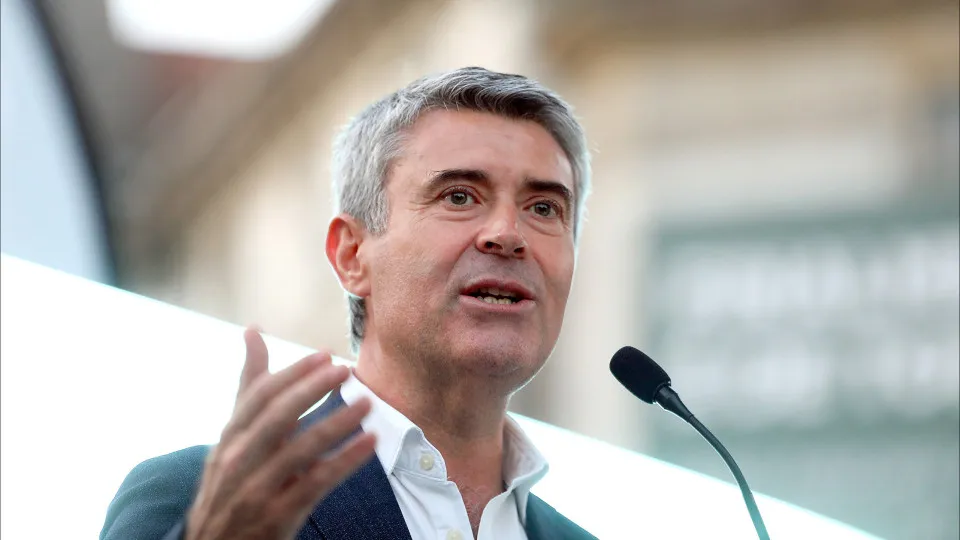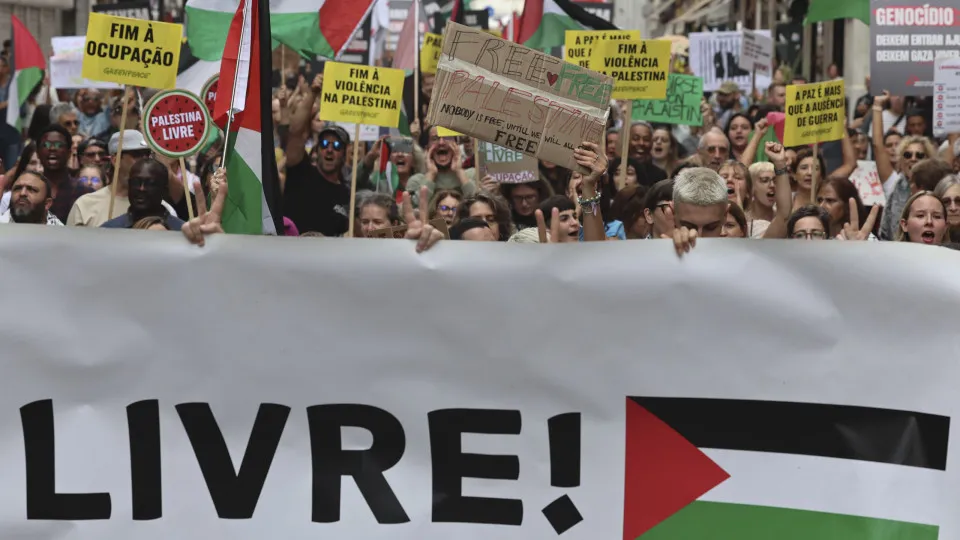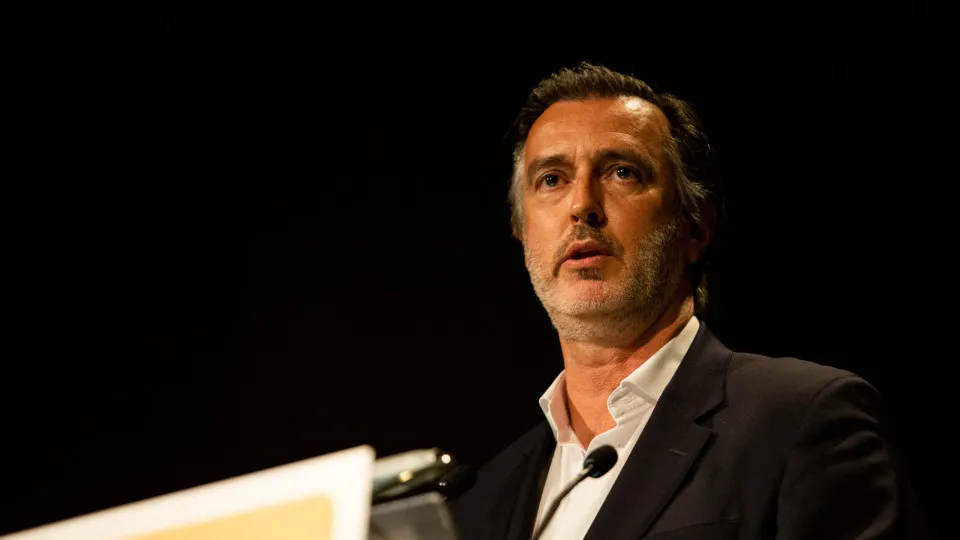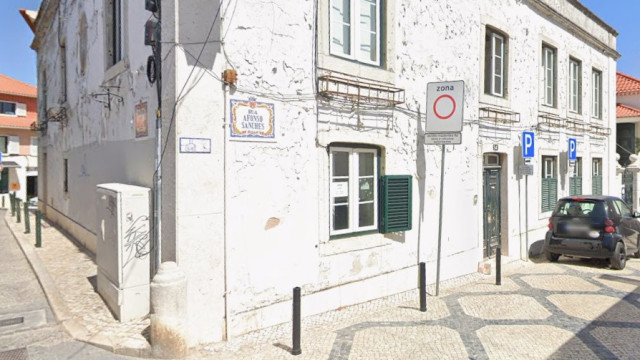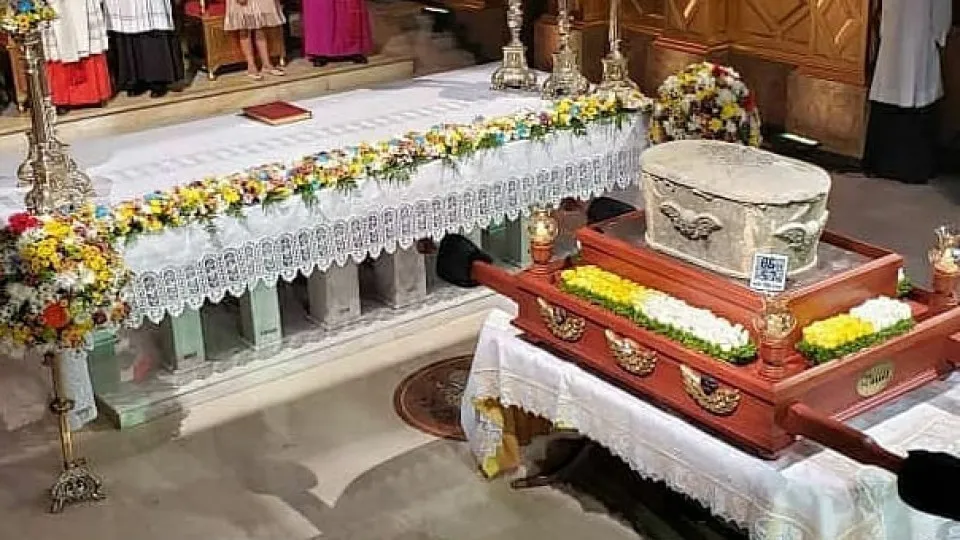
Migrating to Venezuela on May 2, 1987, at age 14 and originally from Rebordosa – Paredes in Portugal’s Porto district, José António Moreira da Silva is part of the third generation of carpenters in his family, with his grandfather being “a pioneer in furniture making” in that locality.
“I’ve been a carpenter since I was little. First, it was my grandfather, then my father, and then me. I was contacted by the church because of my professional trajectory, as they chose me to sculpt the urn of José Gregório Hernández,” he began explaining.
He emotionally described that the remains of José Gregório Hernández rest in the church of La Candelária (in central Caracas), where hundreds of Luso-Venezuelans were baptized, which “did not have an altar as such” until May 2021, when the church reached out to him.
“I met with them [CEV], with Father Gerardino Barracchini of the Church of La Candelária, and architect José Gregório Bertulio. They asked me to use a very resistant, hard wood. It was a very special project, done not just with care, but with love and a lot of devotion. I used ‘puy wood’ and a joint pattern known among professionals as ‘dovetail’,” he said.
José António Moreira da Silva further explained, “If the urn were square, it would be easy to make, but it had angles and particular characteristics,” with a complicated joint process “to ensure the wood was joined and the work was perfect.”
The altar of José Gregório Hernández at the Church of La Candelária contains a marble pedestal protected by an image of the Virgin of Carmen, the main Marian devotion of the new saint and ‘doctor of the poor’.
At the center of the piece is his image, and below it, a wooden urn with a trapezoidal structure, measuring 54 centimeters long, corresponding to his age at death, 23 centimeters wide at the age he became a doctor, and 31 centimeters in depth, representing his years in medical service.
The inner box measures 17 centimeters in height, relating to the age José Gregório Hernández began studying medicine.
The urn, which contains a monogram with the initials of the new saint on the top lid, is suspended on imperceptible stainless steel sheets, giving an impression of levitation in a bath of light, an artistic composition by architect José Gregório Bertulio.
Pope Leo XVI today canonized Venezuela’s first saints, ‘doctor of the poor’ José Gregório Hernández and nun Mother Carmen Rendiles.
According to the Diocese of Caracas, José Gregório Hernández Cisneros was born on October 26, 1864, in the small town of Isnotú, in the state of Trujillo, central-western Venezuela.
He was the son of Benigno Hernández, a merchant and store owner, and Josefa Antónia Cisneros, the eldest of six siblings.
His work as a doctor went beyond practicing medicine. His consultations were open to patients of any social class.
He died in Caracas on June 29, 1919.
Mother Carmen Elena Rendiles Martínez was born on August 11, 1903, in Caracas.
She was a Venezuelan Catholic member of the Servants of the Eucharist and founder of the Servants of Jesus of Caracas.
She died in Caracas on May 9, 1977.

